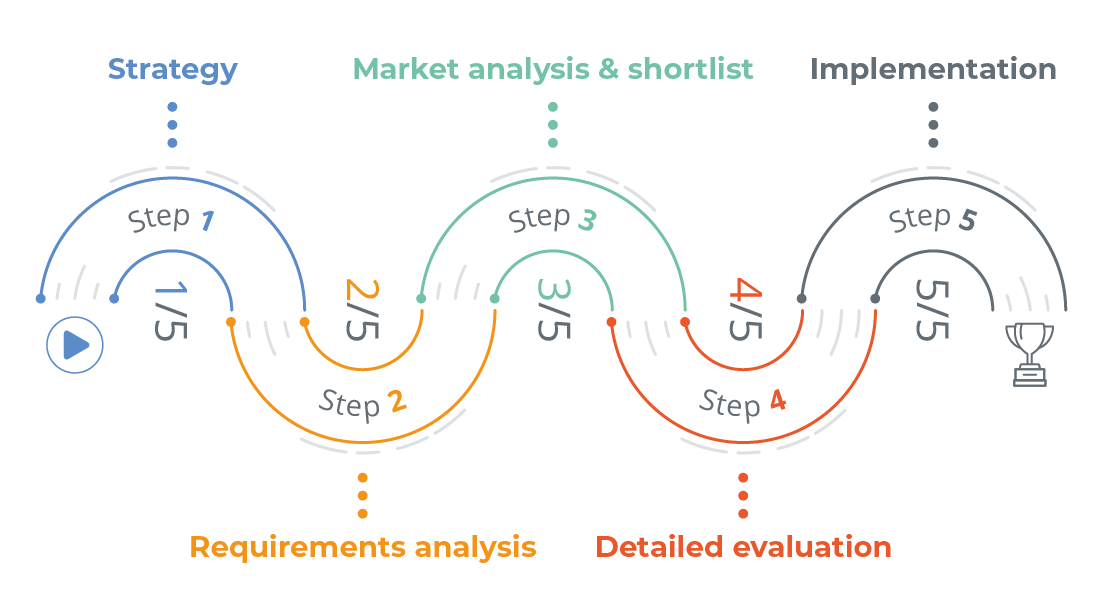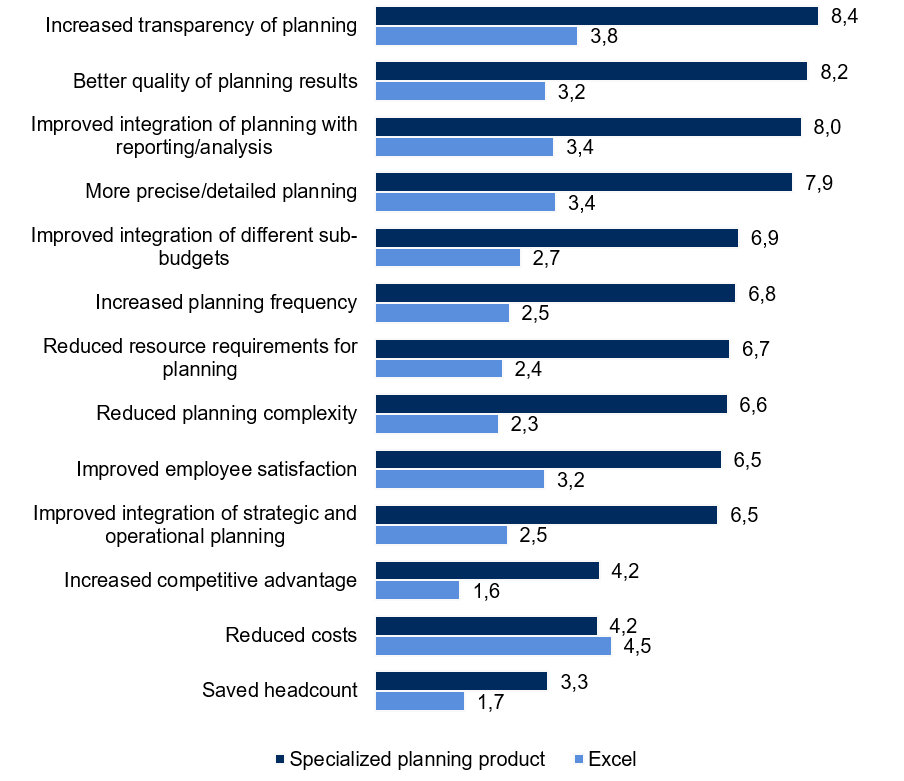
Why only carefully selected planning and analytics software can maximize the benefits for your company
Companies in many industries are currently facing challenging times. Looking back over the past 12-18 months, many organizations have painfully discovered the importance of a transparent view of current data, short-term forecasts of further developments, and analyses of different simulation scenarios. Without sound software support, these requirements cannot be met.
For good reason, a recent BARC study shows that more than 50 percent of companies consider the technology they use to be an essential lever for optimizing planning and forecasting and would like to invest accordingly. But before you can benefit from modern solutions, you have to master the software selection process. It is precisely here that many companies struggle to find the right solutions for their needs.
Software selection is a step-by-step, multi-stage process
The selection of planning and analytics software is a multi-stage process that can be divided into five essential steps (see Figure 1).
Starting with a company's data & analytics strategy, which defines the "guardrails" for software selection, but encompasses much more than just technology decisions (e.g., architecture, organization, etc.), the actual software selection starts with a requirements analysis. In this phase, the requirements for a solution are collected from all parts of the company, documented and weighted. It is important here to include all stakeholders across the organization in the process in order to avoid resistance further down the line. The collation and analysis of vendor-specific, technical and functional requirements forms the starting point for all subsequent steps in the software selection process.
As soon as there is clarity about the requirements, the software market can be examined. Having identified the relevant market segment (e.g., planning and analytics) and created a longlist based on an initial market overview, the market must be narrowed down to three to five relevant solutions (a shortlist). In order to proceed efficiently, the focus should initially be on the most important requirements: the so-called knockout criteria. A review of these criteria is usually sufficient to make a reasonably precise but not overly complex preselection.
A more thorough examination of the relevant providers and possible implementation partners takes place in the detailed evaluation phase. This involves the test implementation of a subtask of the overall task being addressed. Real data should be used so that all the relevant criteria of the requirements analysis can be evaluated. Since cost and price-performance ratio are usually important evaluation criteria in selection processes, the detailed evaluation should also include the calculation of the anticipated set-up and running costs.
Finally, a software vendor can be chosen and the implementation of the solution can begin.

Figure 1: The five steps of the software selection process
Only solutions that match your requirements can provide a high level of benefit
The importance of diligence in software selection processes is underscored by the benefits that can be achieved. BARC Surveys have empirically proven that only solutions matching an organization’s requirements as closely as possible can generate a high degree of business benefits. Choosing the wrong software solution can therefore be a serious threat to project success.
This can be illustrated by comparing Excel with specialized planning and analytics solutions. Figure 2 shows the level of benefits that companies achieve by using planning and analytics solutions compared with the use of Excel. Excel can be seen as a solution that is still widely used in companies for planning and analytics, but which fails to meet the requirements of many users and thus leads to errors, inconsistencies, high resource expenditure and ultimately frustration.
Figure 2 illustrates that specialized planning and analytics solutions are significantly more beneficial than traditional spreadsheets, which are not entirely fit for purpose. This once again underpins the importance of a requirements analysis in software selection processes as an important sub-step, but also the careful evaluation of software solutions against these requirements. Solutions that do a poor job of meeting requirements inevitably end up being rejected and bypassed within the company. Given the often not inconsiderable investment of buying and implementing a solution, this risk should not be underestimated. "Sloppily" selected software solutions are often called into question after only a short time since the hoped-for benefits do not materialize and, in the worst cases, the whole selection process has to be repeated after only a few years.

Figure 2: To what level have you achieved the following benefits with your product (-2=not achieved, 10=high)? Specialized planning products (n=918) vs. Excel (n=119). Source: BARC “The Planning Survey 21”
Summary and recommendations for your software selection project
Sound software support for planning and analytics is essential for companies, especially in dynamic times such as these, in order to be able to make decisions and forecasts based on transparent and consistent data.
A requirements-oriented software selection is the basic prerequisite for ensuring that a planning and analytics solution can provide a high level of benefits for companies and avoid acceptance problems. For this reason, your company's requirements should be fully documented and weighted, and carefully checked against the solutions offered on the market. Surprisingly, many companies fail at this step.
A formal software selection including a comparison of several solutions is important and creates investment security. The right approach protects you from a bad decision or even a failed project. Careful selection lays the foundation for the best possible support from your chosen software solution.
And one final tip for your project: If necessary, consult independent experts such as BARC, who can accompany and support you through the selection process. They have the necessary process know-how, many years of experience and a deep knowledge of the software market. Thanks to an efficient and resource-saving approach, consulting costs will pay for themselves sooner than you think.


